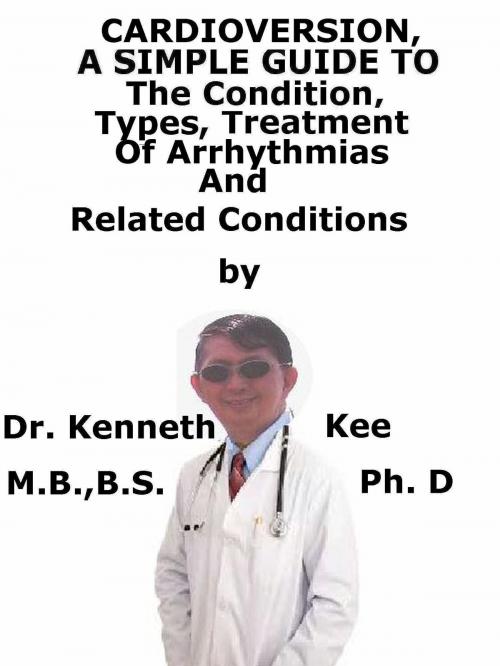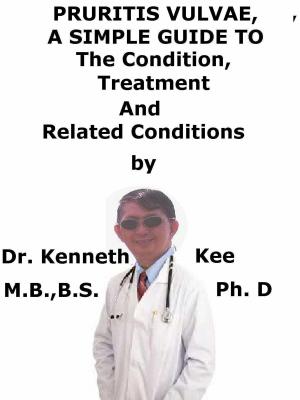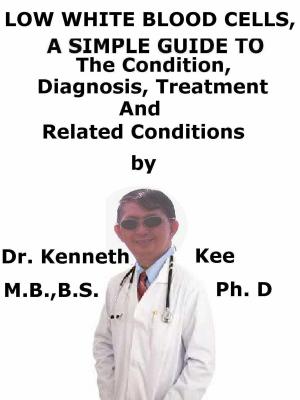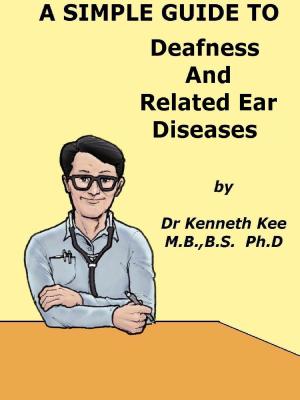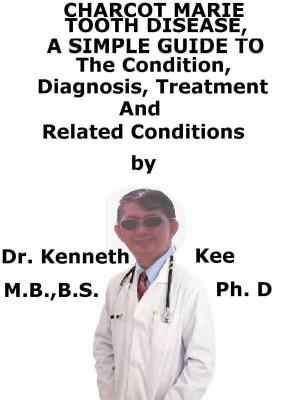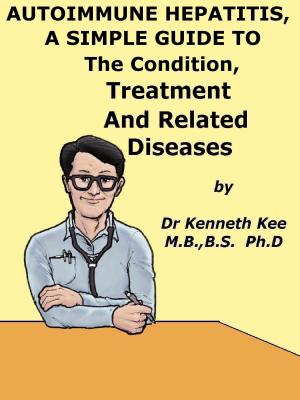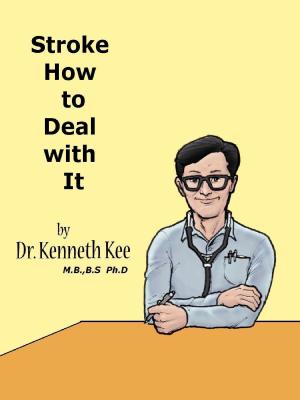Cardioversion, A Simple Guide To The Condition, Types, Treatment of Arrhythmias And Related Conditions
Nonfiction, Health & Well Being, Medical, Specialties, Internal Medicine, Cardiology, Health, Ailments & Diseases, Heart| Author: | Kenneth Kee | ISBN: | 9781370279708 |
| Publisher: | Kenneth Kee | Publication: | March 26, 2018 |
| Imprint: | Smashwords Edition | Language: | English |
| Author: | Kenneth Kee |
| ISBN: | 9781370279708 |
| Publisher: | Kenneth Kee |
| Publication: | March 26, 2018 |
| Imprint: | Smashwords Edition |
| Language: | English |
This book describes Cardioversion, Types and Treatment of Arrhythmias and Related Diseases
Cardioversion is a method to return an abnormal heart rhythm back to normal.
Cardioversion can be given using an electric shock or with drugs.
Electric Cardioversion
An electrical cardioversion, often called a cardioversion, is a method used to treat an abnormal and rapid heart rhythm (also known as cardiac arrhythmia).
The most often treated arrhythmia is atrial fibrillation.
Another rhythm often treated with electrical cardioversion is atrial flutter.
During a cardioversion intervention, an electrical "shock" is given to the chest to return the heart rhythm to a normal pattern.
Electric cardioversion is done with a device (called defribillator) that supplies an electrical shock to the heart to change the rhythm back to normal.
Electrical cardioversion is a synchronized giving of shock during the R waves or QRS complex of a cardiac cycle.
During defibrillation and cardioversion, electrical current moves from the negative to the positive electrode by traversing the myocardium.
It induces all of the heart cells to contract simultaneously.
This disrupts and stops abnormal electrical rhythm.
This, in turn, permits the sinus node to return to normal pacemaker activity.
The shock can be given from a device outside the body called an external defibrillator.
These are present in emergency rooms, ambulances, or some public places such as airports.
Electrode patches are stuck on the chest and back.
The patches are connected to the defibrillator.
Or, paddles connected to the devices are placed directly onto the chest.
The defibrillator is activated and an electric shock is supplied to the heart.
This shock transiently ceases all electrical activity of the heart.
Then it permits the normal heart rhythm to resume.
Occasionally more than one shock or a shock with higher energy is required.
It is normally scheduled in advance but is occasionally also done in emergency circumstances.
Cardioversion is normally given with electric shocks, done through electrodes connected to the chest, while the patient is sedated.
Electric cardioversion takes less time than cardioversion done alone with medicines, and the doctor can immediately see if the procedure has recovered a normal heartbeat.
Chemical cardioversion
Cardioversion is a procedure given to restore an abnormal heartbeat to a normal rhythm.
This procedure is done when the heart is beating very fast or irregular or an arrhythmia.
In chemical cardioversion, medicines are given to get the heart back to a normal rhythm.
1.Flecainide,
2.Dofetilide,
3.Propafenone,
4.Amiodarone or
5.Ibutilide
Cardioversion can be done with drugs that are taken by mouth or given intravenously (IV).
The result from this treatment may be from several minutes to days for the medicine to work.
This treatment is often done in a hospital where the heart rhythm can be monitored
The patient may be given blood thinning medicines to prevent blood clots from developing and leaving the heart (which can cause a stroke).
Before trying chemical cardioversion, the doctor may try to reset the heart rate in other ways:
1.The Valsalva maneuver where the patient holds the breath and increase the pressure in the belly.
This can bring the heart rate down.
The doctor may then use chemical cardioversion to alter the rhythm to normal.
2.If these things fail, electrical cardioversion is the next step.
An implantable cardioverter-defibrillator (ICD) is a device that is placed inside the body to detect dangerously fast heartbeats and give a lifesaving shock to correct the heart’s rhythm..
TABLE OF CONTENT
Introduction
Chapter 1 Cardioversion
Chapter 2 Pathophysiology
Chapter 3 Electrical Cardioversion
Chapter 4 Chemical Cardioversion
Chapter 5 Internal Cardioversion
Chapter 6 Abnormal Heart Rhythms
Chapter 7 Cardiac Arrest
Chapter 8 Coronary Heart Disease
Epilogue
This book describes Cardioversion, Types and Treatment of Arrhythmias and Related Diseases
Cardioversion is a method to return an abnormal heart rhythm back to normal.
Cardioversion can be given using an electric shock or with drugs.
Electric Cardioversion
An electrical cardioversion, often called a cardioversion, is a method used to treat an abnormal and rapid heart rhythm (also known as cardiac arrhythmia).
The most often treated arrhythmia is atrial fibrillation.
Another rhythm often treated with electrical cardioversion is atrial flutter.
During a cardioversion intervention, an electrical "shock" is given to the chest to return the heart rhythm to a normal pattern.
Electric cardioversion is done with a device (called defribillator) that supplies an electrical shock to the heart to change the rhythm back to normal.
Electrical cardioversion is a synchronized giving of shock during the R waves or QRS complex of a cardiac cycle.
During defibrillation and cardioversion, electrical current moves from the negative to the positive electrode by traversing the myocardium.
It induces all of the heart cells to contract simultaneously.
This disrupts and stops abnormal electrical rhythm.
This, in turn, permits the sinus node to return to normal pacemaker activity.
The shock can be given from a device outside the body called an external defibrillator.
These are present in emergency rooms, ambulances, or some public places such as airports.
Electrode patches are stuck on the chest and back.
The patches are connected to the defibrillator.
Or, paddles connected to the devices are placed directly onto the chest.
The defibrillator is activated and an electric shock is supplied to the heart.
This shock transiently ceases all electrical activity of the heart.
Then it permits the normal heart rhythm to resume.
Occasionally more than one shock or a shock with higher energy is required.
It is normally scheduled in advance but is occasionally also done in emergency circumstances.
Cardioversion is normally given with electric shocks, done through electrodes connected to the chest, while the patient is sedated.
Electric cardioversion takes less time than cardioversion done alone with medicines, and the doctor can immediately see if the procedure has recovered a normal heartbeat.
Chemical cardioversion
Cardioversion is a procedure given to restore an abnormal heartbeat to a normal rhythm.
This procedure is done when the heart is beating very fast or irregular or an arrhythmia.
In chemical cardioversion, medicines are given to get the heart back to a normal rhythm.
1.Flecainide,
2.Dofetilide,
3.Propafenone,
4.Amiodarone or
5.Ibutilide
Cardioversion can be done with drugs that are taken by mouth or given intravenously (IV).
The result from this treatment may be from several minutes to days for the medicine to work.
This treatment is often done in a hospital where the heart rhythm can be monitored
The patient may be given blood thinning medicines to prevent blood clots from developing and leaving the heart (which can cause a stroke).
Before trying chemical cardioversion, the doctor may try to reset the heart rate in other ways:
1.The Valsalva maneuver where the patient holds the breath and increase the pressure in the belly.
This can bring the heart rate down.
The doctor may then use chemical cardioversion to alter the rhythm to normal.
2.If these things fail, electrical cardioversion is the next step.
An implantable cardioverter-defibrillator (ICD) is a device that is placed inside the body to detect dangerously fast heartbeats and give a lifesaving shock to correct the heart’s rhythm..
TABLE OF CONTENT
Introduction
Chapter 1 Cardioversion
Chapter 2 Pathophysiology
Chapter 3 Electrical Cardioversion
Chapter 4 Chemical Cardioversion
Chapter 5 Internal Cardioversion
Chapter 6 Abnormal Heart Rhythms
Chapter 7 Cardiac Arrest
Chapter 8 Coronary Heart Disease
Epilogue
